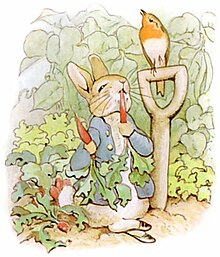Rabbit
They are familiar throughout the world as a small herbivore, a prey animal, a domesticated form of livestock, and a pet, having a widespread effect on ecologies and cultures.As prey animals, rabbits are constantly aware of their surroundings, having a wide field of vision and ears with high surface area to detect potential predators.Rabbits are seen in human culture globally, appearing as a symbol of fertility, cunning, and innocence in major religions, historical and contemporary art.[26] Descendants of the European rabbit are commonly bred as livestock and kept as pets, whereas no hares have been domesticated, though populations have been introduced to non-native habitats for use as a food source.Carl Linnaeus originally grouped rabbits and rodents under the class Glires; later, they were separated as the scientific consensus is that many of their similarities were a result of convergent evolution.[50] The anatomy of rabbits' hind limbs is structurally similar to that of other land mammals and contributes to their specialized form of locomotion.[60] The force put out by the hind limbs is contributed by both the structural anatomy of the fusion of the tibia and fibula, and by the muscular features.The muscles of rabbit's hind limbs can be classified into four main categories: hamstrings, quadriceps, dorsiflexors, or plantar flexors.The rule was originally derived by comparing the ear lengths of Lepus species across the various climates of North America.It is theorized that the ears aid in dispersion of heat at temperatures above 30 °C (86 °F), with rabbits in warmer climates having longer pinnae due to this.Another theory is that the ears function as shock absorbers that could aid and stabilize rabbits' vision when fleeing predators, but this has typically only been seen in hares.The inner ear comprises two parts: the cochlea that uses sound waves from the ossicles, and the vestibular apparatus that manages the rabbit's position in regard to movement.Within the cochlea a basilar membrane contains sensory hair structures that send nerve signals to the brain, allowing it to recognize different sound frequencies.Homeostasis of body temperature is maintained by changing the amount of blood flow that passes through the highly vascularized ears,[68][74] as rabbits have few to no sweat glands.[77] The nasal cavity itself is separated into a left and right side by a cartilage barrier, and it is covered in fine hairs that trap dust before it can enter the respiratory tract.They will typically graze grass upon waking up and emerging from a burrow, and will move on to consume vegetation and other plants throughout the waking period; rabbits have been known to eat a wide variety of plants, including tree leaves and fruits, though consumption of fruit and lower fiber foods is common for pet rabbits where natural vegetation is scarce.[87] The Leydig cells produce testosterone, which maintains libido[87] and creates secondary sex characteristics such as the genital tubercle and penis.[108][109] Domesticated rabbits with a diet lacking in high-fiber sources, such as hay and grass, are susceptible to potentially lethal gastrointestinal stasis.[112] The disease was first described in domestic Angora rabbits imported from Germany to Jiangsu, China in 1984, and quickly spread to Korea, Italy, and the rest of Europe.If confronted by a potential threat, a rabbit may freeze and observe, then warn others in the warren with powerful thumps on the ground from a hind foot.[119] A rabbit eye has no fovea, but a "visual streak", a horizontal line in the middle of the retina where both rod and cone cell densities are the highest.[133] Rabbits live in groups, or colonies, varying in behavior depending on species and often using the burrows of other animals or creating nests in holes.Gassing (fumigation of warrens),[143] barriers (fences),[144] shooting, snaring, and ferreting[145][146] have been used to control rabbit populations,[146] but the most effective measures are diseases such as myxomatosis and calicivirus.[165] Rabbit meat is a feature of Moroccan cuisine, where it is cooked in a tajine with "raisins and grilled almonds added a few minutes before serving".[168] The disease can cause symptoms of fever, skin ulcers and enlarged lymph nodes, and can occasionally lead to pneumonia or throat infection.[168] Inhaling the bacteria during the skinning process increases the risk of getting tularemia;[170] preventative measures against this include the use of gloves and face masks.[194] This comes from interpreting the pattern of dark patches on the moon as a rabbit standing on tiptoes on the left pounding on an usu, a Japanese mortar.[204] On the Isle of Portland in Dorset, UK, the rabbit is said to be unlucky, and speaking the creature's name can cause upset among older island residents.This is thought to date back to early times in the local quarrying industry, where, to save space, extracted stones that were not fit for sale were set aside in what became tall, unstable walls.In the local culture to this day, the rabbit (when he has to be referred to) may instead be called a "long ears" or "underground mutton" so as not to risk bringing a downfall upon oneself.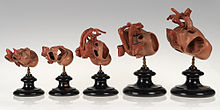
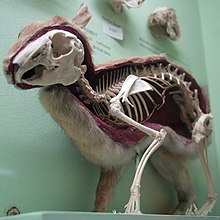
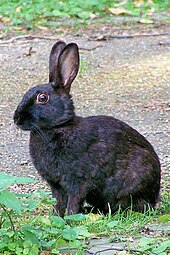





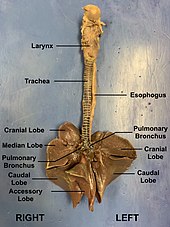


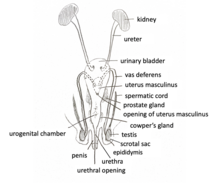






Bunny (disambiguation)Rabbit (disambiguation)EoceneHolocenePreꞒEuropean rabbitScientific classificationEukaryotaAnimaliaChordataMammaliaLagomorphaLeporidaePentalagusBunolagusNesolagusRomerolagusBrachylagusSylvilagusOryctolagusPoelagusCladisticallymammalsfamilyecologiesgenerabreedsdomestic rabbitAntarcticacottontailstapetisdistributionpygmy rabbitvolcano rabbitSumatran striped rabbitparaphyleticrodentsincisorsconvergent evolutionmolecular biologycommon ancestorGliresphysiologyhabitatsthermoregulationblood vesselsnocturnalpregnancieslittersmating seasonrabbit hemorrhagic diseasemyxomatosisAustraliaancient Romecuniculturesymbolmajor religionsMiddle EnglishWalloonMiddle DutchsquirrelsHispaniaCeltic languagesOld EnglishList of leporidsRodentiaretrotransposonpaleontologydivergedTertiaryPronolagusCaprolagusRiverine rabbitHispid hareAnnamite striped rabbitAmami rabbit/Ryūkyū rabbitBunyoro rabbitNatal red rock hareJameson's red rock hareSmith's red rock hareHewitt's red rock hareAndean tapetiSwamp rabbitDesert cottontailBrush rabbitCommon tapetiMexican cottontailDice's cottontailEastern cottontailCentral American tapetiTres Marias cottontailRobust cottontailOmilteme cottontailMountain cottontailAppalachian cottontailMarsh rabbitSanta Marta tapetiCoastal tapetiNew England cottontailVenezuelan lowland rabbitprecocialaltricialburrowswarrenssympatricEuropean hareEuropeancottontail rabbitsdomesticatedBelgian hareFlemish GiantSelective breedingwide variety of rabbit breedsstrainsresearch subjectsNew Zealand whiteRex rabbitdyeingAngora rabbitpluckedMongoliaepiglottisobligate nasal breatherincisorCarl Linnaeusplantigrade

